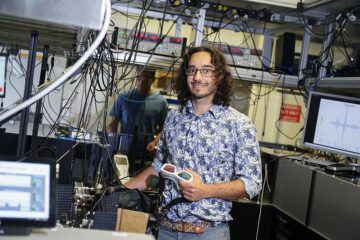Polygenic Mouse Model for Juvenile Obesity Research

<strong>Technology</strong><br>
We offer two well-characterized polygenic mouse models that allow the test of drugs for weight loss and the targeted search for genetic factors influenc-ing fat deposition: The Berlin Fat Mouse (BFM) outbred population and the Berlin Fat Mouse Inbred 860 (BFMI860) strain. BFM has been selected for low protein content and for high fatness and low body mass from a base population of animals bought in several Berlin pet shops. BFMI860 is an inbred derivate of BFM that has been generated by repeated mating of most obese BFM full-sibs after 58 generations of selection. BFM and BFMI860 develop extreme body weight with high body fat mass, but only marginal increased body lean mass. The phenotype is visible already at a very early age. Highest weight gain occurs between 6 and 10 weeks. At standard diet, the adult animals of the BFMI860 strain had a body fat percentage of 22 to 30% in males and 28 to 37% in females compared to 6% in wildtype mice. The animals respond to high fat diet with further increase of adiposity. BFMI860 mice show several features of the metabolic syndrome. <br><br> Consistent with the high genetic variability, BFM animals have a higher varia-bility in the fat percentage and related phenotypes than BFMI860. </p> <p><strong>Benefits</strong><br> <ul> <li>BFM and BFMI860 dispose of more body weight, body fat mass and body lean mass (protein mass) than wt (Wagener et al. 2006)</li> <li>BFMI exhibit general increase in body fat mass but only marginal increase in body lean mass in contrast to other growth-selected mouse lines </li> </ul> <p><strong>Origin</strong><br> The development was made by the Humboldt-Universität zu Berlin.
Weitere Informationen: PDF
ipal GmbH
Tel.: +49 (0)30/2125-4820
Ansprechpartner
Dr. Dirk Dantz
Media Contact
Alle Nachrichten aus der Kategorie: Technologieangebote
Neueste Beiträge

Neue universelle lichtbasierte Technik zur Kontrolle der Talpolarisation
Ein internationales Forscherteam berichtet in Nature über eine neue Methode, mit der zum ersten Mal die Talpolarisation in zentrosymmetrischen Bulk-Materialien auf eine nicht materialspezifische Weise erreicht wird. Diese „universelle Technik“…

Tumorzellen hebeln das Immunsystem früh aus
Neu entdeckter Mechanismus könnte Krebs-Immuntherapien deutlich verbessern. Tumore verhindern aktiv, dass sich Immunantworten durch sogenannte zytotoxische T-Zellen bilden, die den Krebs bekämpfen könnten. Wie das genau geschieht, beschreiben jetzt erstmals…

Immunzellen in den Startlöchern: „Allzeit bereit“ ist harte Arbeit
Wenn Krankheitserreger in den Körper eindringen, muss das Immunsystem sofort reagieren und eine Infektion verhindern oder eindämmen. Doch wie halten sich unsere Abwehrzellen bereit, wenn kein Angreifer in Sicht ist?…

















